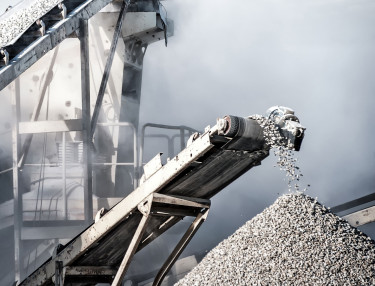SERIES: RUSTICA, OLYMPIA, CLASSIC & VARIA
Scandi-Roc’s cast concrete elements consist of natural products and, as a consequence of this, there will always be variations in their appearance. We supply both dry-cast and wet-cast elements. The dry-cast concrete products are characterised by a rustic surface that has an open pore structure. The distinctive feature of a wet-cast concrete product is its more uniform and even surface.
We have described and explained below the natural appearance/features of the different types of stones, which should be borne in mind when choosing the concrete elements as these must not be confused with defects that may give cause for complaint.
Lime deposition and differences in colour
Lime deposition may occur and is a natural part of the hardening process. The depositions normally disappear by themselves within 1 or 2 years, in rare cases up to 3 years. If you don’t want to wait, deacidification may help to get rid of the deposition.
Although lime depositions are a generally recognised phenomenon and it is not possible to avoid these through internal controls, this does not mean that we at SR do not take the problem seriously. We therefore add costly ingredients in the production of our concrete elements to reduce the lime depositions. But, unfortunately, it is not possible to ensure that all of our concrete products are completely free of lime depositions.
Differences in colour occur naturally on concrete products. These differences are caused by differences in hardening conditions, moisture content, sand and gravel, temperature conditions before hardening and such like. Differences in colour even out gradually over time.
The lime depositions only occur when the stones are stacked on pallets, and often after they have been delivered. It is a good idea, therefore, to lay the stones immediately after they have been delivered, and also to avoid storing the stones on pallets for several months before laying them. Stones that are delivered in autumn and not laid until spring have a greater risk of acquiring major depositions. If storage over a long period of time cannot be avoided, the stones should be kept dry and not exposed to moisture in the form of rain, condensation, etc.
For further information about lime depositions please refer to the Belægningsgruppen, Dansk Beton - www.betonsten.dk - Brochure: Lime depositions.
Structure
Structural differences occur frequently in concrete products, as the casting process is very complicated. Since the appearance of the surface depends on many factors, there will always be variations in the way each element expresses itself.
Iron deposition
Cast concrete elements may in some cases have rust stains. These stains are caused by ferrous particles in the sand and gravel the stones are cast in, for example, in the form of clay ironstone. This is, of course, something we try to avoid, but it cannot be eliminated completely. The depositions may have some colour variation, depending on what sort of iron is present. The iron depositions are not harmful to the concrete, and certain types disappear over time.
Tolerances
Tolerances of +/- 2 mm in relation to the stated targets will be accepted. For wet cast elements from the seires of Olympia tolerances of +/- 3 mm must be accepted.

